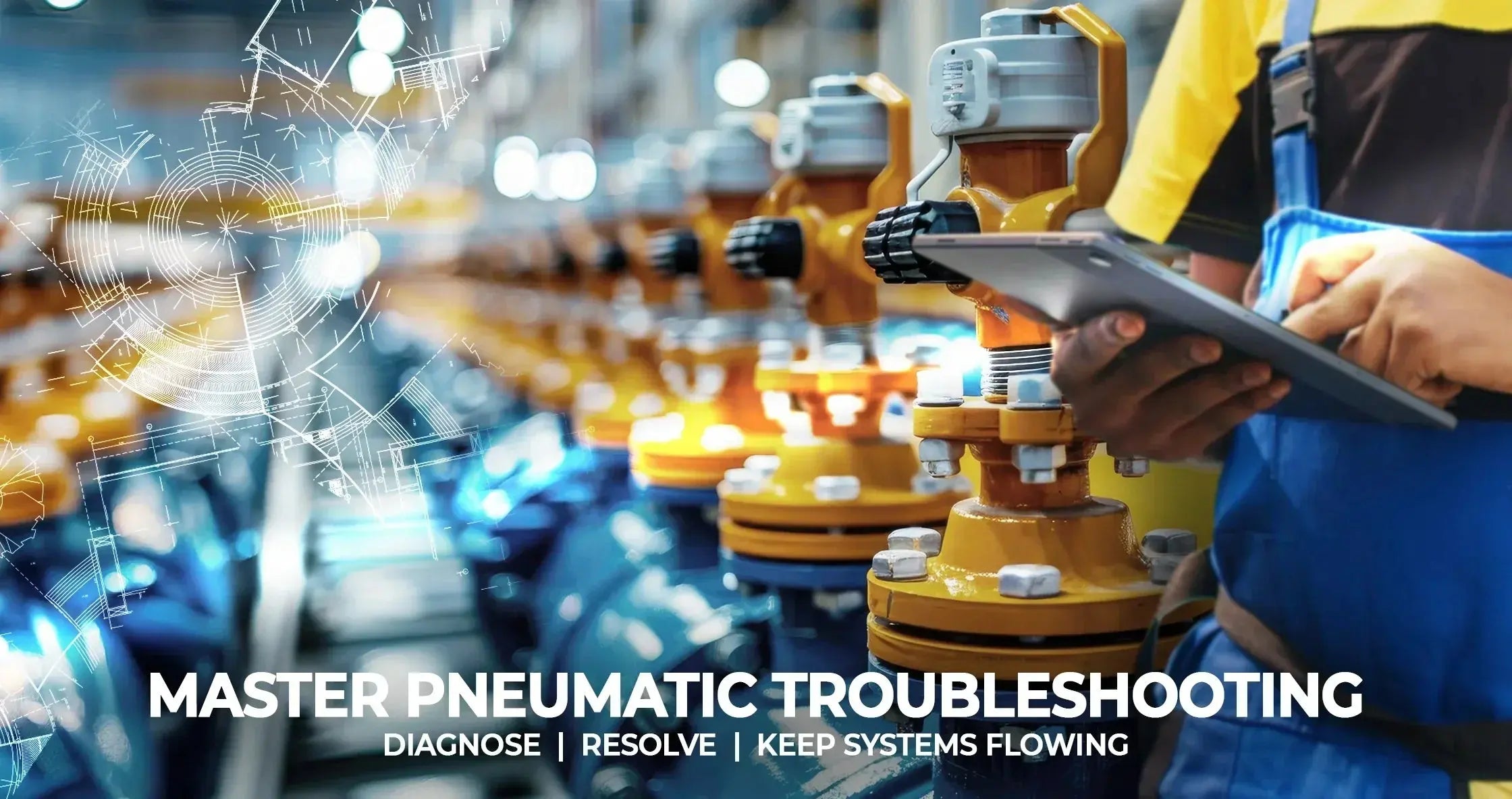In fast-paced industrial environments, pneumatic systems power everything from packaging machines to robotic arms. When these systems falter, operations slow or stop altogether, leading to productivity losses and costly downtime. That's why effective pneumatic troubleshooting is essential for any maintenance team.
This comprehensive guide offers a practical troubleshooting checklist to identify and resolve common pneumatic problems like pressure drops, slow actuator response, irregular movements, and compressor overheating. For each issue, we provide probable causes and actionable remedies to help restore systems quickly and reliably.
Understanding the Basics of Pneumatic Troubleshooting
Before diving into specific issues, it’s important to understand how pneumatic systems function. Compressed air flows through a network of filters, regulators, valves, actuators, and tubing. Each component must work harmoniously to deliver optimal pressure and movement.
Effective pneumatic troubleshooting begins with understanding this flow and identifying where disruptions may occur. Routine inspections, documentation, and visual checks should be part of standard maintenance practice.
Troubleshooting Checklist for Pneumatic Systems
Use the following structured checklist to diagnose and correct frequent pneumatic issues:
1. Pressure Drops
Symptoms: Tools or actuators operate weakly or inconsistently.
Likely Causes:
- Clogged air filters
- Leaking hoses or fittings
- Undersized piping
- Excessive demand beyond compressor capacity
Remedies:
- Inspect and replace filters regularly
- Use leak detection methods like soapy water or ultrasonic leak detectors
- Evaluate pipe sizing and compressor ratings
- Segment air usage across multiple systems if possible
2. Slow Cylinder or Actuator Movement
Symptoms: Cylinders fail to extend or retract at normal speeds.
Likely Causes:
- Dirty or damaged pneumatic valves
- Insufficient air pressure
- Blocked mufflers or exhaust ports
- Lubrication issues inside the actuator
Remedies:
- Clean or replace malfunctioning valves
- Ensure regulators are correctly set
- Inspect exhaust paths and clean mufflers
- Apply appropriate actuator grease or oil per manufacturer guidelines
3. Irregular or Jerky Movements
Symptoms: Actuators move unpredictably, skip motions, or oscillate.
Likely Causes:
- Moisture in the system
- Contaminated air supply
- Inconsistent valve timing or solenoid delays
Remedies:
- Drain moisture traps and install dryers
- Add inline air filters or dryers to improve air quality
- Check valve coil voltage and control signal consistency
4. Compressor Overheating
Symptoms: Compressor shuts down, feels hot to the touch, or causes circuit breakers to trip.
Likely Causes:
- Dirty cooling fins or blocked intake vents
- Operating above duty cycle
- High ambient temperatures
- Low oil levels (for oil-lubricated compressors)
Remedies:
- Clean intake filters and cooling fans
- Allow cooling intervals between long cycles
- Improve ventilation around compressor
- Refill or replace compressor oil as recommended
Component-Specific Troubleshooting
Filters and Regulators
Common Issue: Pressure fluctuation or insufficient flow
- Inspect for clogs or damage
- Replace filter cartridges on schedule
- Verify regulator pressure setting matches application needs
Hoses and Fittings
Common Issue: Leaks and pressure loss
- Tighten loose fittings
- Replace brittle or cracked hoses
- Use thread sealant as needed
Directional Control Valves
Common Issue: Sticky response or incorrect operation
- Remove debris and lubricate
- Replace worn solenoids or coils
- Ensure electrical signals are within spec
Pneumatic Cylinders
Common Issue: Incomplete stroke or sluggish action
- Check rod seals for wear
- Inspect alignment and end-of-stroke cushioning
- Confirm adequate air supply
Best Practices for Preventive Maintenance
To reduce the need for frequent pneumatic troubleshooting:
- Schedule regular inspections of filters, hoses, and valves
- Keep moisture levels low with air dryers
- Maintain an accurate log of system issues and resolutions
- Train technicians on specific component behavior and specs
When to Replace vs Repair Pneumatic Components
Over time, some pneumatic parts reach end-of-life. Here are guidelines to help decide whether to repair or replace:
Replace If:
- Component failure recurs after multiple repairs
- Parts show irreversible wear (e.g., cracked seals, warped rods)
- Downtime cost outweighs replacement expense
Repair If:
- Issue is minor (e.g., clog, misalignment)
- Replacement part lead time is too long
- You have in-house rebuild expertise
Conclusion: Keep Systems Flowing with Proactive Troubleshooting
Pneumatic troubleshooting is a critical skill for keeping industrial systems running efficiently. By following a structured checklist and addressing issues early, maintenance teams can minimize downtime, extend equipment life, and avoid costly repairs.
Want to equip your facility with top-quality pneumatic components for smoother performance and easier maintenance?
Explore these collections at IndustrialElectricalWarehouse:
Stay ahead of problems. Maintain your pneumatic systems with confidence and precision.


